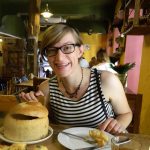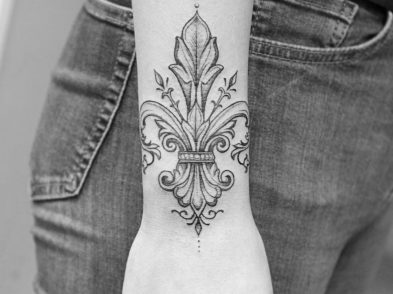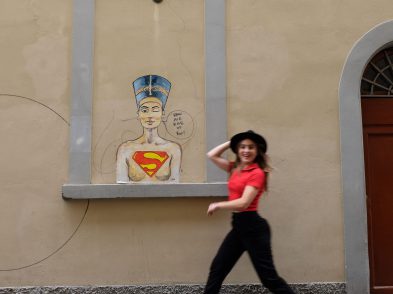Not a political man, Dutch artist M.C. Escher was frustrated to discover that his eldest son, born and raised in Italy, was showing signs of Fascism’s growing influence. Wearing a Balilla uniform to fit in with the rest of his classmates, young George’s developing interest in the movement made his parents determined to leave the country they had called home for the previous 13 years. Settling in Switzerland, and later Belgium, before ultimately ending up back in the Netherlands, Escher never forgot the Italian landscapes that so heavily inspired his work since he first set foot in the country on a visit in 1922.
Indeed, his famous Metamorphosis series, the first two of which were completed shortly after leaving Italy, in 1937 and 1939-40, duly depicts the town of Atrani on the Amalfi Coast. The tessellation woodcuts are just a few of the mind-bending artworks that Escher would make over the course of his career, but the Dutchman actually boasts a significant repertoire of simpler yet nonetheless extraordinary woodcuts, lithographs and more, many of which are on display at the exhibition Escher: Beyond the Possible, at Palazzo Blu in Pisa until February 11, 2018.
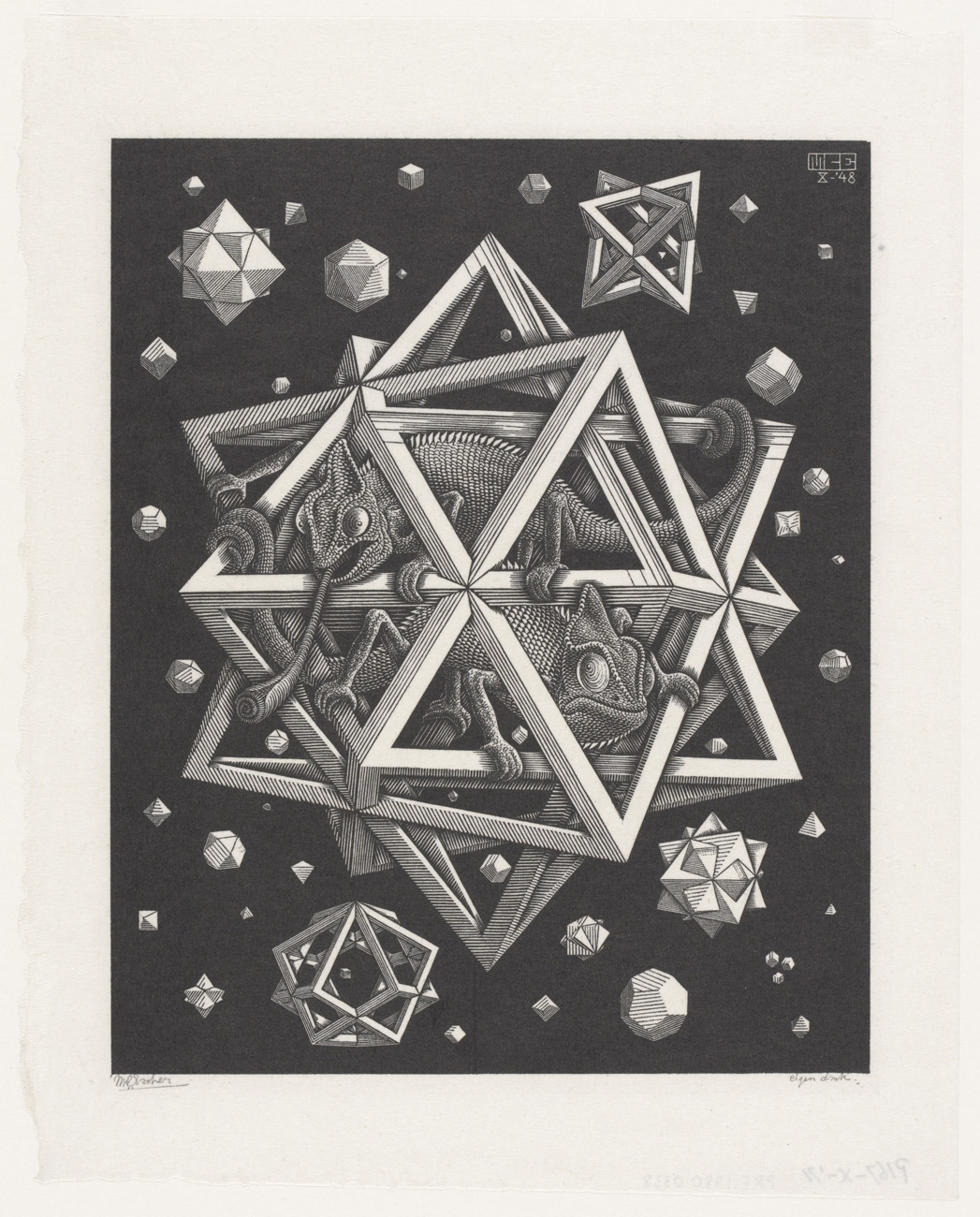 M.C. Escher, Stars, 1948. Wooden engraving. Gemeentemuseum Den Haag collection. All M.C. Escher works © the M.C. Escher Company B.V.-Baarn- the Netherlands.
M.C. Escher, Stars, 1948. Wooden engraving. Gemeentemuseum Den Haag collection. All M.C. Escher works © the M.C. Escher Company B.V.-Baarn- the Netherlands.
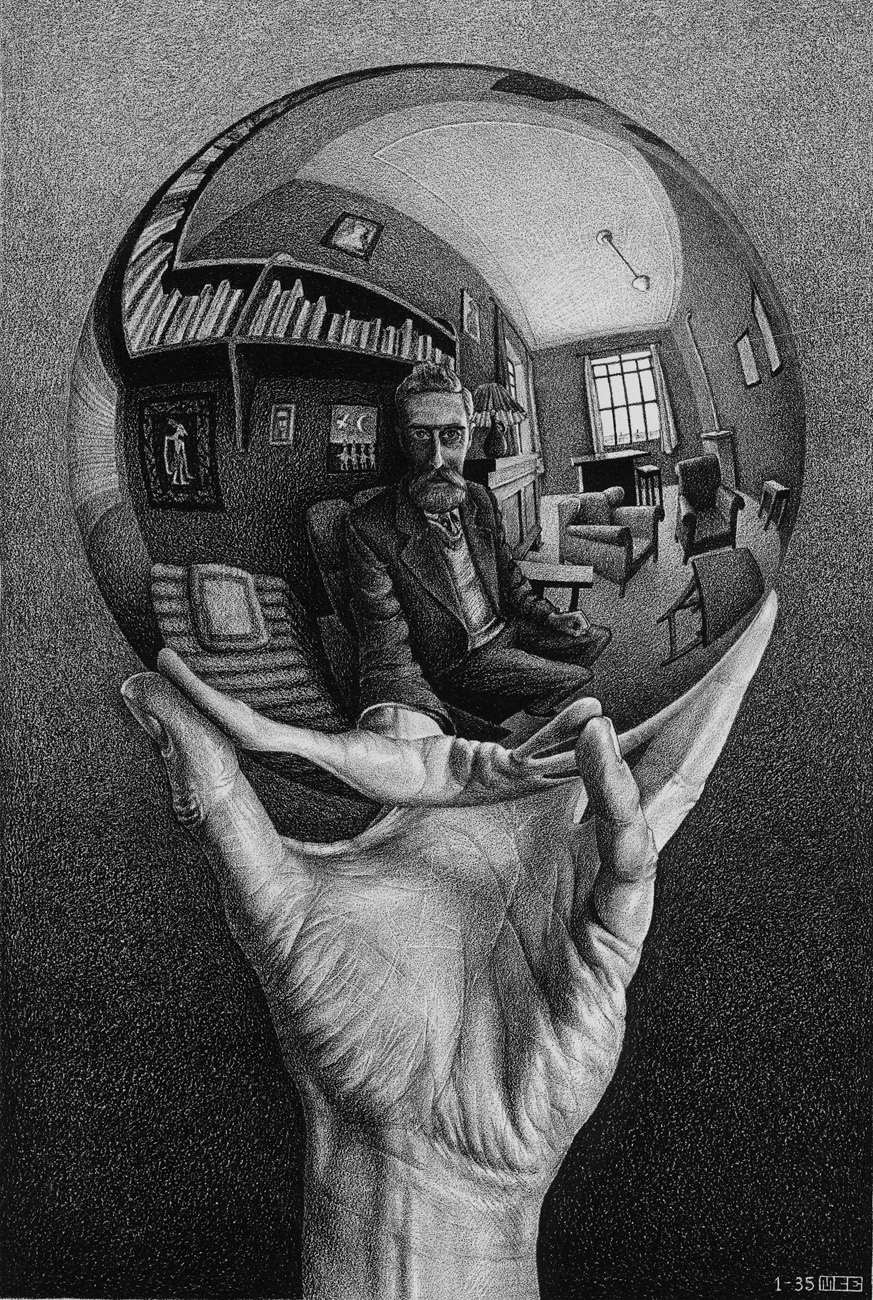 M.C. Escher, Hand with a Reflecting Sphere, 1935. Lithograph. Gemeentemuseum Den Haag collection. All M.C. Escher works © the M.C. Escher Company B.V.-Baarn- the Netherlands.
M.C. Escher, Hand with a Reflecting Sphere, 1935. Lithograph. Gemeentemuseum Den Haag collection. All M.C. Escher works © the M.C. Escher Company B.V.-Baarn- the Netherlands.
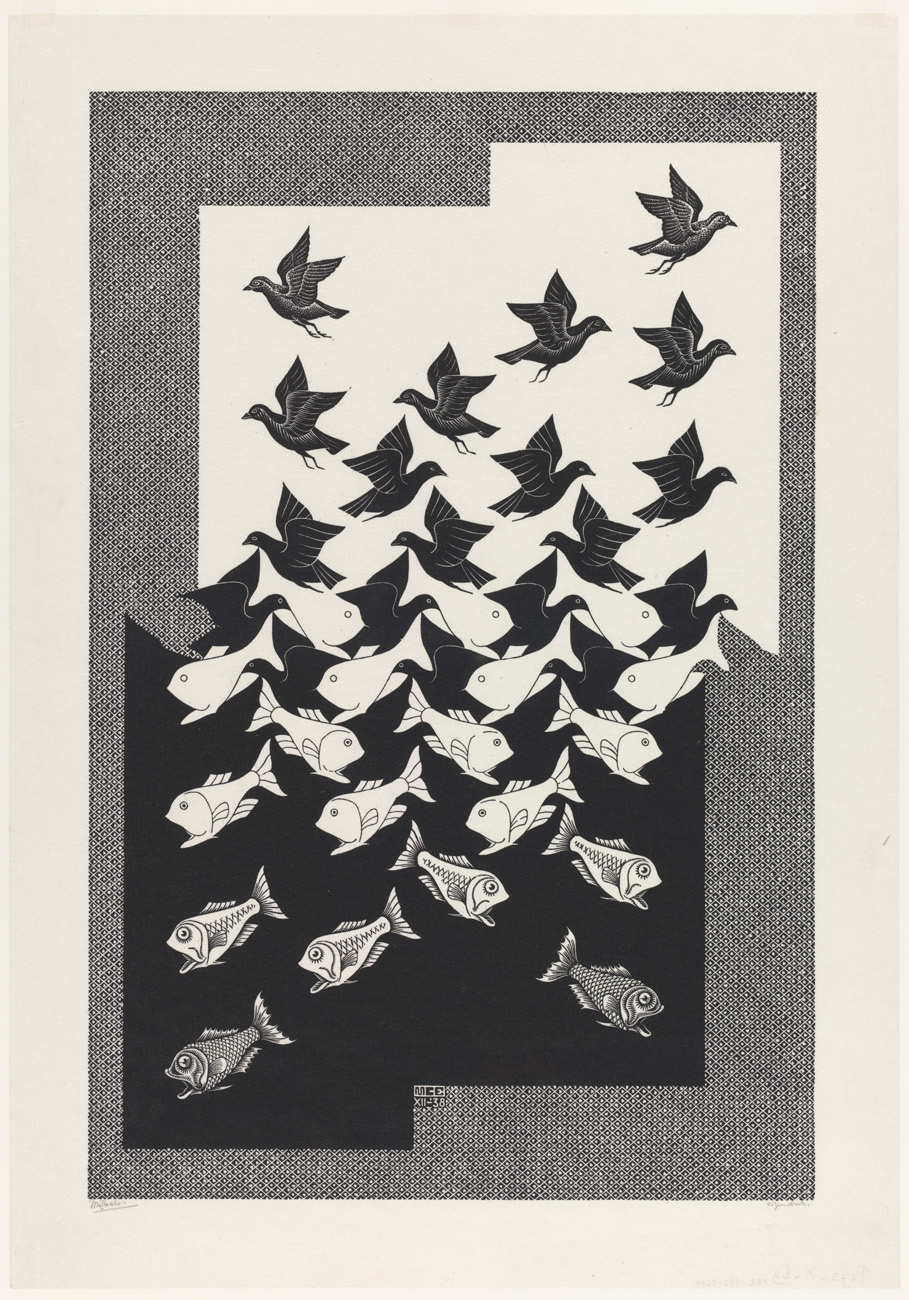 M.C. Escher, Sky and Water II, 1938. Wooden engraving. Gemeentemuseum Den Haag collection. All M.C. Escher works © the M.C. Escher Company B.V.-Baarn- the Netherlands.
M.C. Escher, Sky and Water II, 1938. Wooden engraving. Gemeentemuseum Den Haag collection. All M.C. Escher works © the M.C. Escher Company B.V.-Baarn- the Netherlands.
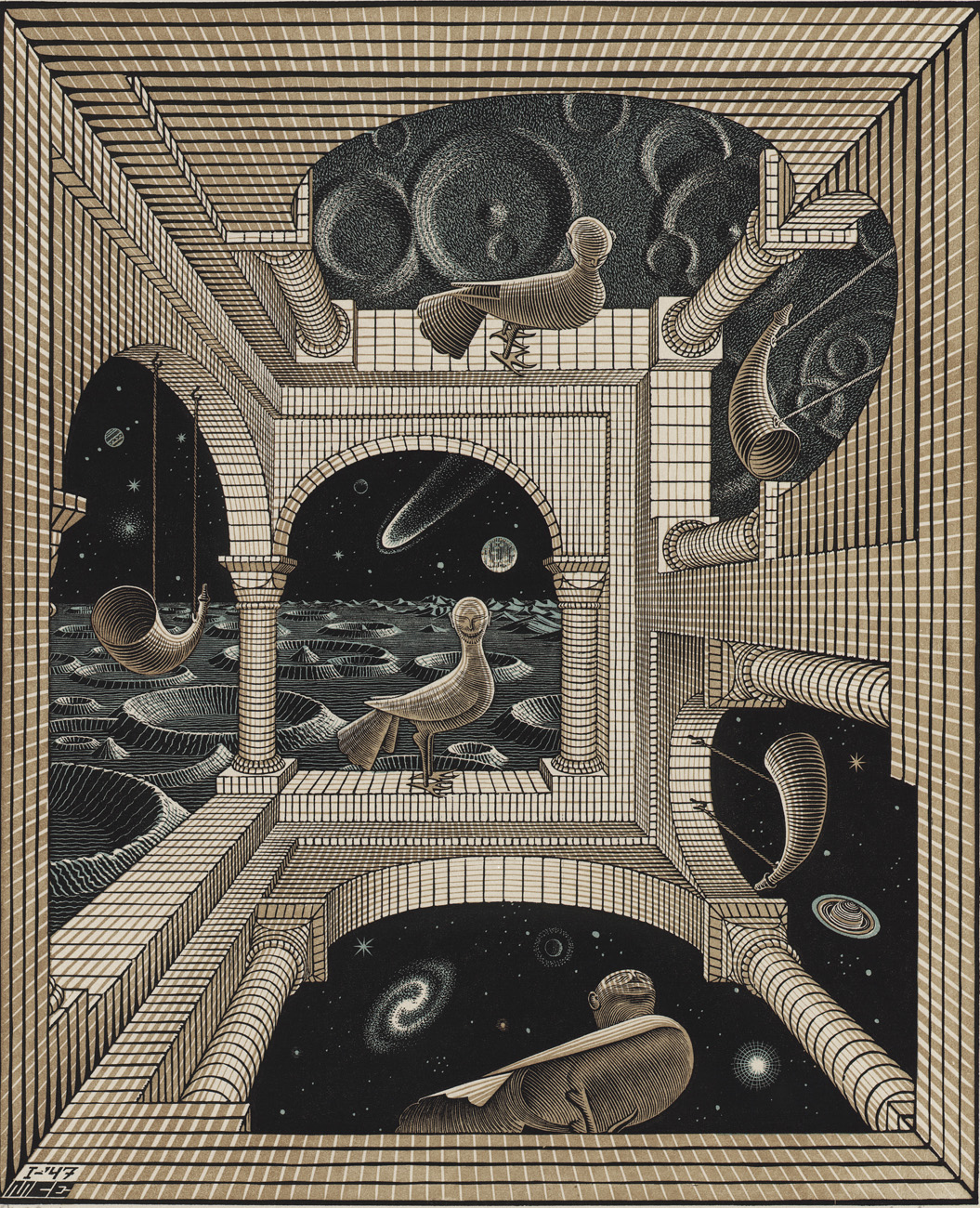 M.C. Escher, Another World, 1947. Wooden engraving. Gemeentemuseum Den Haag collection. All M.C. Escher works © the M.C. Escher Company B.V.-Baarn- the Netherlands.
M.C. Escher, Another World, 1947. Wooden engraving. Gemeentemuseum Den Haag collection. All M.C. Escher works © the M.C. Escher Company B.V.-Baarn- the Netherlands.
Escher’s journey into the world of art began, as expected, in school. After a year in Delft, the budding artist moved on to the School of Architecture and Decorative Arts in Haarlem, where he pursued his studies in architecture. Discontent with this path, he switched to decorative arts, learning the art of woodcutting under Samuel Jessurun de Mesquita, who would sadly perish in Auschwitz two decades later. De Mesquita was instrumental in Escher’s direction, as it was he who inspired the young artist to look at the mathematical and rational elements found in Jewish and Islamic arts, comparing them with the avant-garde movements unfolding in Europe at the time. These abstract motifs went on to dominate Escher’s works, as the Metamorphosis series demonstrates.
Of the exhibition’s nine sections, one is entirely dedicated to Escher’s focus on geometric forms, showcasing his initial, relatively straightforward works from the early 1920s, before his pieces transformed into his famous style, exemplified by the 1948 piece Stars. The section on Animals also bears witness to the way the Dutch artist weaved his interest in geometry into all manners of subjects, as can be seen in the way Reptiles and Sky and Water I blend imagery and play with the viewer’s eye.
The exhibition does not go about things chronologically and is all the better for it. The nine sections are divided by subject, allowing visitors to experience Escher’s interests one at a time. Within the separate rooms, however, the works are settled in chronological order, rendering the evolution of his style from simple woodcuts to logic-defying masterpieces as clear as day. Any exhibition on Escher would need to cover the style for which he’s gone down in the textbooks, and indeed, Palazzo Blu’s show is no exception. The section dedicated to architecture is a wondrous treat for lovers of classic Escher, architecture and even mathematics (why not?). But through the placement of the works of Escher the artist beside works of Escher the student, viewers experience the Dutchman in a whole new light. No other section in the exhibition better underscores Escher’s training and talent for woodcutting than Landscapes. And it is in this room that the sheer influence of Italy’s endless variety of landscapes shows itself.
Escher travelled extensively throughout the country both in 1922 and after he returned to live permanently in 1923, falling in love with the alternating panorama of cityscape and nature, of landscapes completely different than the flat plains of his homeland. Escher’s print of San Gimignano sums this up with perfection, offering an out-of-the-ordinary view of the lush vegetation on the outskirts of the city in the foreground and the towers and buildings jutting out against the sky in the background. Additionally, the artist’s predilection for the Italian coast and cliff sides is seen in works like Vitorchiano nel Cimino and Bonifacio, Corsica. The juxtaposing black and white colouring seems to make the rocky landscapes all the more rugged, which simultaneously contrast with the sinuous leaves of the tree in Vitorchiano or the simple, blocky buildings atop the cliff in Bonifacio. The section is not lacking in other examples of the artist’s fascination with the Italian landscape, with a selection of pieces depicting places like Sicily, Venice, Abruzzo, Corsica and Calabria. Escher’s interest in landscapes began to die away after leaving Italy, as he was uninspired by what he saw in Switzerland and the Netherlands. It was after this point that he began to focus on interior landscapes and his imaginary worlds rather than what was real.
Though Escher’s work continued to take on a complex imagery as he began to create some of his most iconic pieces, it remains a great testament to Italy’s beauty that most of the artist’s depictions of nature come from his time in the country. Beyond the Possible does an impressive job of bringing these works together and in a way that shows the impact Escher’s developing style had on the way he perceived Italy’s aesthetic. But this is a theme throughout the exhibition: in their very variety, the show’s nine separate subjects reflect the mind of Escher as he matured over his decades-long career, offering an overview of the man who was more than just his impossible objects.
Escher: Beyond the Possible
Extended until February 11, 2018
Palazzo Blu, lungarno Gambacorti 9, Pisa

